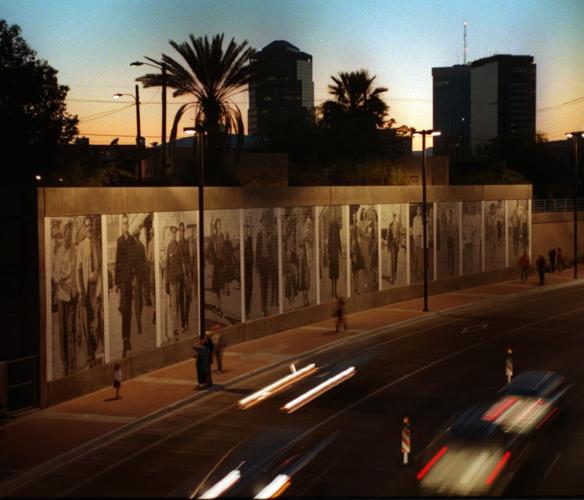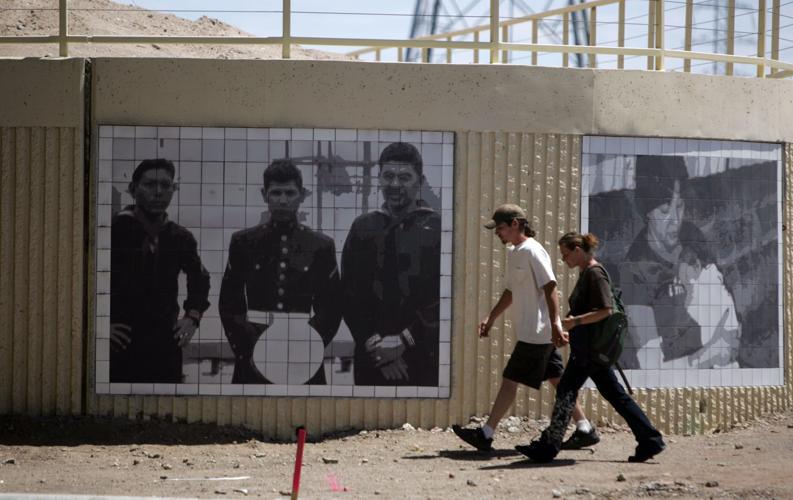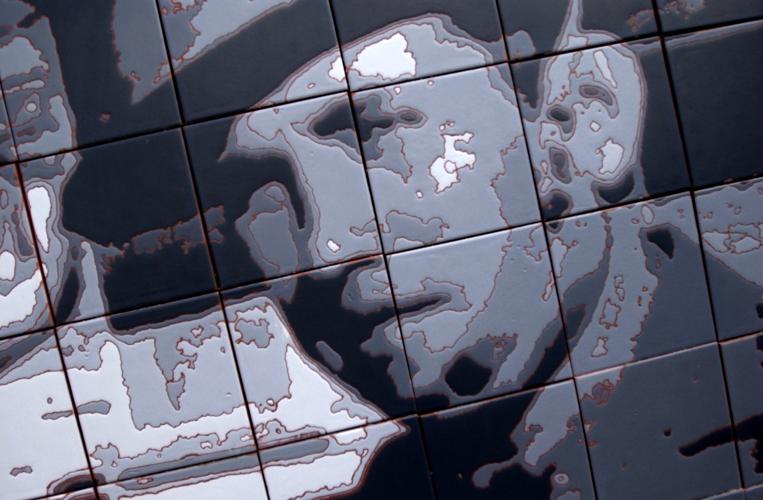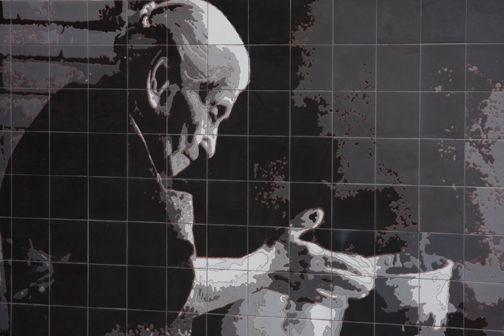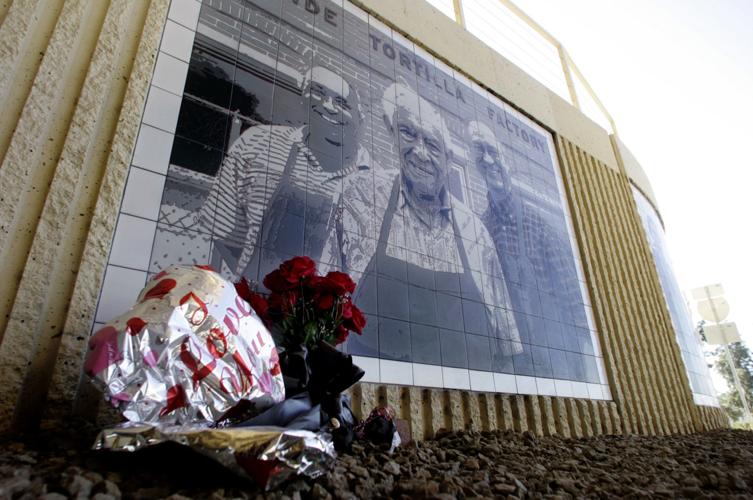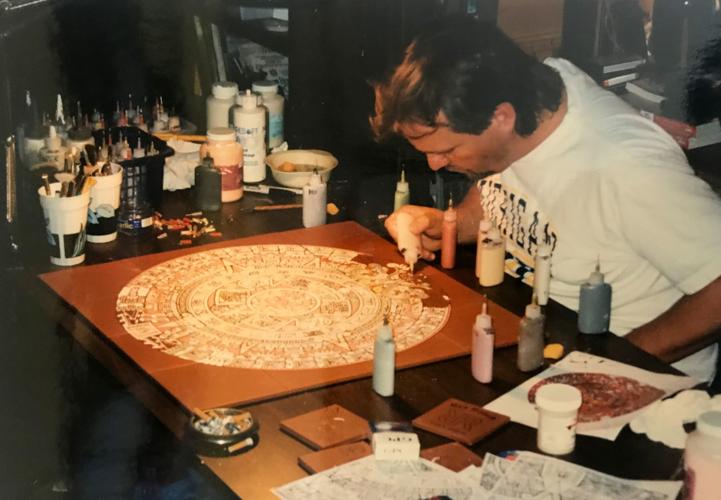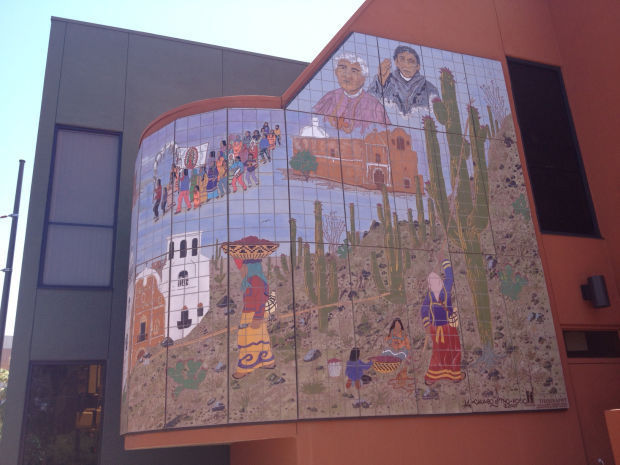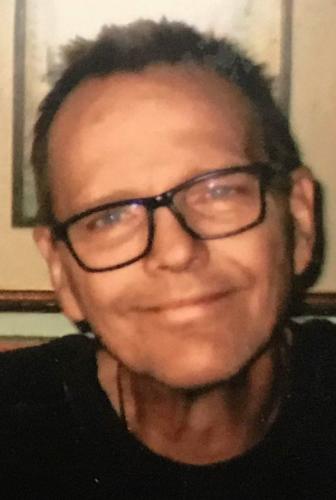I didn’t know Rick Young. But I know his work.
Young was a tile glazer who, with his life partner Tom Galloway and graphic designer-state Sen. Steve Farley, created a myriad of tile murals that dot the metro region.
You have undoubtedly seen Young’s public works, the most iconic being the multi-images of Tucson at the Broadway railroad underpass. There are others in Barrio Hollywood, Oro Valley and on the Tohono O’odham Nation.
The works reflect much of our town, environment and people. They speak of us and to us.
Young was 58. He died July 4. He had battled cancer for a year, Galloway said.
“He was all soul,” he said.
Young and Galloway began their partnership in 1991. They established a studio, Tile Canvases, and started making “little things to buy beer,” Galloway said. But big things would come their way.
In the late 1990s, Young and Galloway joined Farley to create the landmark downtown mural, “Windows to the Past, Gateway to the Future,” at the Broadway underpass, the north end of Barraza-Aviation Highway. It was dedicated May 1, 1999.
“I had this crazy idea and I knew I had to do it,” Farley said. “I looked to Rick and Tom, and they were crazy enough to do it.”
The trio created a photography-tile technique, naming it tilography. Photos from Tucson’s past were digitized in a computer and broken down into tones. The outlines were transferred onto the tiles. They were unsure if it would work or if they could create the four, 18-foot-tall murals using more than 16,000, 6-by-6-inch tiles. But they did and the project launched their work.
Some of the public works include:
- “Saguaro Kids: Oro Valley Gold,” eight murals on four steel structures at the Oracle Crossings shopping center in Oro Valley. Each structure has a saguaro cactus on one side and a local child posing like that saguaro on the other side, erected in 2006.
- “Easy” Company Korean War Memorial, erected at Kino Veterans Memorial Plaza, 2805 E. Ajo Way, in 2002, honors 12 Tucson U.S. Marines who were killed in the Korean War.
- Tohono Plaza Murals are a collection of colorful depictions of the flora and fauna of the Tohono O’Odham Nation, and black-and-white historical images, at the Tohono Plaza shopping center in Sells, erected in 2008.
- Barrio Hollywood Mural Project, erected in the span of seven years, beginning in 2002, 24 3-foot-by-six-foot panels on 12 steel structures along North Grande Avenue in Barrio Hollywood. The murals are based on photographs collected by residents of the west-side neighborhood.
- Murals at the St. Mary’s Road and Interstate 10 underpass are also taken from family photos of Barrio Anita and Barrio Hollywood residents, including an image of an elderly nana making tortillas, based on a photograph by former Arizona Daily Star photographer David Sanders.
- “A Porter Family Homecoming,” installed in 2008, four panels at the Tucson Botanical Gardens, honoring the Porter family who donated their homestead, which became the gardens.
And then there are dozens of murals in homes and businesses in our valley, and other tile murals in Phoenix, California, Texas, Florida and Virginia.
Galloway said he and Young worked on more than 100 tile murals since the Broadway project. Among the projects was Young’s favorite: “The Church and the City,” erected in 2006 on the exterior of the former Roman Catholic Diocese of Tucson office at South Church Avenue and West Broadway. The work, in collaboration with Tohono O’Odham watercolorist Michael Chiago, was commissioned by former Bishop Gerald Kicanas.
The work was taken down in 2016 before the building was razed to make room for a residential complex. Parts of the mural are housed at the diocese’s temporary pastoral center at South Scott Avenue and East Broadway but will be relocated when the diocese completes its new facility.
Both Galloway and Farley said Young was driven by his passion for beauty, which he found around him and translated into his work.
Another of Young’s favorite works was “Garden of Our Ancestors,” four glazed ceramic tile murals showing life in Tucson in the late 19th century, before the coming of the railroad in the 1880s.
The mural is at All Faiths Cemetery, by South Houghton Road and East Old Spanish Trail, where more than 1,200 Tucsonans, who were originally buried in downtown’s National Cemetery from 1860-1874, were reinterred. This work was also commissioned by Kicanas.
Another of Young’s passions was Tucson, said Farley. Young was born in Tucson and attended Rincon High School. His parents, Lonas and Julia Young, built and owned the Sunset Rollerama skating rink at East 22nd Street and South Swan Road.
Farley said Young left Tucson for Los Angeles, but returned soon after. “He couldn’t stay away. Tucson was in his soul,” Farley said.
Galloway said his partner, who was loving and spiritual, had the ability “to get into people,” to understand what they were seeking, especially when it came to completing art projects to their clients’ satisfaction.
“He brought a lot of happiness to a lot of people through what he did,” said Galloway.
Young’s life was devoted to doing his art well, Galloway said.
A memorial service will be held at 11 a.m., July 28, at Angel Valley Funeral Home, 2545 N. Tucson Blvd.


